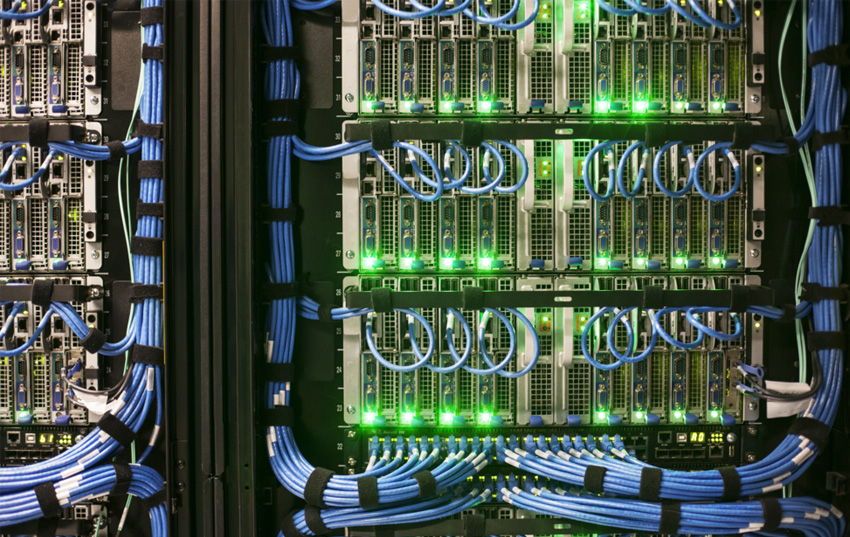
The rise of artificial intelligence (AI) in the global technology space in the past year has caused a gold rush for digital infrastructure assets. Cloud providers, such as Amazon Web Services, Microsoft Corp.’s Azure and Google, have looked for suitable infrastructure to house AI deployments, often subject to different power and cooling requirements at the datacenter.
Consequently, these providers have grown their investment in digital infrastructure significantly and have become major growth drivers for the datacenter industry worldwide.
As deals emerge in new locations, colocation players are happy to build accordingly, often expanding to new markets just to service those hyperscaler customers. AI has been the source of much optimism for datacenter players, even bringing about additional expansions in markets that previously appeared capped at capacity due to land or power constraints.
Setting the stage: strong wholesale growth pre-AI
The growth brought by AI is even more impressive when considering what the previous years looked like for the datacenter industry: the global digital infrastructure sector had just seen sky-high levels of investment due to infrastructure needs brought about by the COVID-19 pandemic.
Prior to 2023, cloud providers had already stepped up as the main players driving investment in the business. Hyperscalers, as they are often referred to, do not rely solely on their own infrastructure when building out cloud regions, often taking up space in three or more datacenters in a single market. In the past decade, specialized datacenter providers have emerged to build out this infrastructure. Cloud players investing in a new cloud region or zone in a market usually boosts its datacenter industry significantly, since these players can serve as a major client to not just one but multiple datacenter providers. The datacenter suppliers servicing those hyperscalers as customers are categorized as wholesalers, a growing segment of the datacenter business globally.
The wholesale datacenter industry was already booming before 2023. In the 2015–2022 time frame, S&P Global estimates that wholesale datacenter developments accounted for 65% of the total new leased datacenter capacity. According to S&P Global Market Intelligence 451 Research, total wholesale leased operational power surpassed traditional retail operational power in late 2022, with wholesale accounting for 52% of the total installed base of leased datacenter capacity globally.
The AI boom
For the past year, the popularization of OpenAI tools has served to accelerate cloud providers’ investment in datacenter infrastructure. Their higher level of growth can be seen across multiple markets worldwide, as, across many locations, datacenter providers are now seeing much larger deal sizes, with customers requesting larger amounts of datacenter space.
In the US, a clear example is Northern Virginia, a market where everything has been on a heightened scale for multiple years. In 2018, Meta Platforms Inc. (formerly known as Facebook) made a big splash signing for a 72-megawatt (MW) building with datacenter provider cloudHQ, at the time the largest deal the industry had seen. In 2021, Facebook signed an 80-MW deal. Iron Mountain Inc. signed a 72-MW lease a year later, in 2022. That same year, Corscale kicked off development on a 72-MW facility, pre-leasing it entirely only four months after breaking ground. Likewise, Cologix leased its 120-MW facility in Ashburn, Va., before commissioning in 2023. Even leasing entire campuses is now a possibility: The largest deal so far has been TA Realty’s recent lease of its 430-MW campus in Leesburg, Va.
Dallas is also seeing record leasing and large-scale deals, with firms such as Google reportedly signing a 600-MW facility there recently, while Microsoft has signed a 300-MW deal in Dallas and a 360-MW deal in Chicago (as per TD Cowen) over the past few months.
In Germany, Frankfurt has become a shining example of markets seeing larger deals as well. As cloud service providers grew at an accelerated rate since the onset of the COVID-19 pandemic, the market’s wholesale leased datacenter segment had seen a boom in activity. Yet, starting in 2023, many international operators are seeing much higher requirements: it is now common to lease 80-100-MW facilities, as opposed to 10-15-MW sites typically seen in previous years.
The same can be seen in Asia-Pacific. Although subject to power and regulatory constraints, Singapore is one of the first handful of markets in the region that has started hosting AI-related workloads. Most of the datacenters recently launched in the market are also larger sites that can accommodate AI-oriented deals. Some examples include STT GDC’s STT Singapore 6 facility, which can offer as much as 39.7 MW of IT capacity at full buildout.
Furthermore, Singapore Telecommunications Ltd.’s 58-MW datacenter under development in Tuas will be the largest colocation datacenter in the market, with the provider securing a deal with NVIDIA Corp. to offer GPUs at the facility. In addition, Meta’s facility will be another large site that has a power capacity of up to 150 MW, which presumably could host IT loads north of 100 MW. The datacenter has seen its opening delayed, which is believed to be partly due to redesigns to support AI workloads.
Want insights on datacenter trends delivered to your inbox? Join the 451 Alliance.

